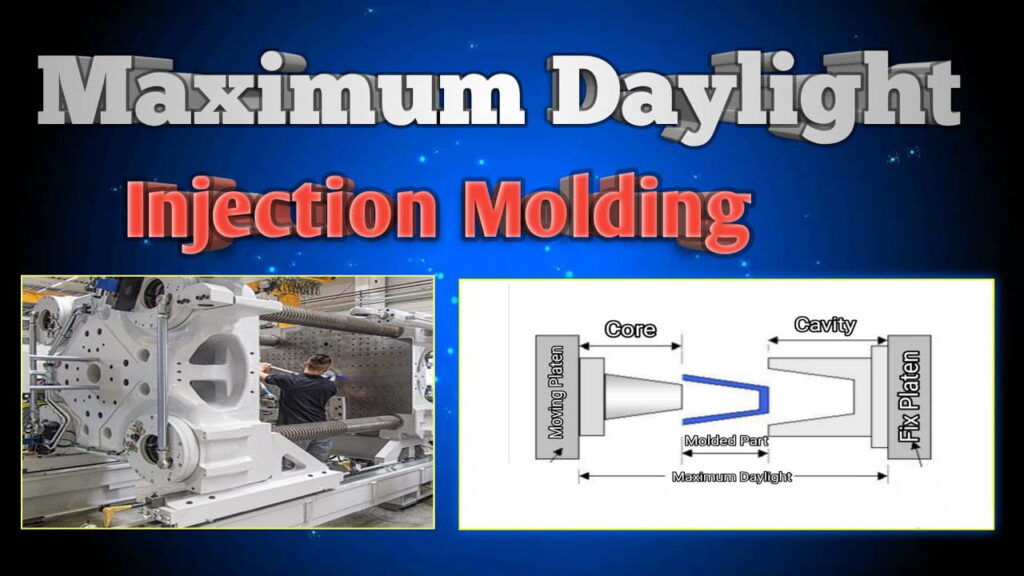Injection molding is one of the most popular manufacturing processes for mass production of plastic parts. But with so many machines, specifications, and configurations to choose from, it can get confusing. One term you’ll often see in injection molding machine specs is “maximum daylight”. But what exactly does it mean? And why does it matter when selecting a machine?
As a professional plastic injection molding manufacturer, I’ll cover all that and more in this complete guide to understanding maximum daylight for injection molding.

What is Maximum Daylight in Injection Molding?
Maximum daylight refers to the maximum distance between the stationary platen and moving platen when the platens are fully open.
In other words, it’s the maximum mold height the machine can accommodate when the mold opens.
This measurement determines the size of the mold and parts you can produce with a given injection molding machine.
Why Maximum Daylight Matters for Injection Molding
The maximum daylight specification directly impacts the size of molds your injection molding machine can run.
Most injection molds are designed right up to the maximum daylight to maximize productivity. After all, larger molds allow you to produce more parts per cycle.
So if your machine’s maximum daylight is too small for your mold, you won’t even be able to run production.
And even if your mold fits, a maximum daylight that’s too close to your mold height leaves little room for demolding and part ejection. This can reduce cycle times and make production more difficult.
That’s why properly matching maximum daylight to your planned mold size is critical.
How to Calculate Maximum Daylight
On a toggle clamp injection molding machine, maximum daylight is calculated by:
Maximum Daylight = Maximum Mold Height + Mold Open Stroke
For a two-platen clamp, maximum daylight typically equals the distance between tie bars minus around 100-150 mm for platen deflection.
In both cases, make sure to account for:
- Height of mold moving half
- Height of finished part
- Clearance for part ejection
- Height of mold fixed half
When in doubt, allow around 20-25% of maximum daylight for clearance.
Maximum Daylight vs. Clamp Stroke
Note that maximum daylight is different from clamp stroke.
Clamp stroke refers to the maximum distance the moving platen travels from the mold closed to mold open positions.
Maximum daylight only measures the distance between platens at maximum mold open position.
So clamp stroke will always equal or exceed maximum daylight, depending on the mold height used.
How to Select Suitable Maximum Daylight
Choosing the right injection molding machine daylight involves:
- Determining the minimum mold height needed for your application based on part height, etc.
- Adding sufficient clearance for demolding, usually 20-25% of total height.
- Comparing the resulting height to injection molding machine specs to find a model with adequate maximum daylight.
Machines with higher maximum daylight offer greater flexibility. But they also take up more factory floor space and cost more to purchase and operate.
So make sure to choose adequate – not excessive – maximum daylight for your specific mold and parts.
Key Takeaways on Maximum Daylight & Injection Molding
- Maximum daylight determines the maximum mold height and part size a machine can accommodate.
- Properly matching mold height to maximum daylight ensures your mold fits and parts can eject.
- Allow around 20-25% of maximum daylight for demolding clearance.
- Consider both maximum daylight and mold stroke when selecting an injection molding machine.
Understanding this key injection molding machine specification helps ensure you choose equipment well-suited for your molds and workflow.
Now that you know what maximum daylight means for injection molding, you’ll be better equipped to select the right machine for your manufacturing needs.
